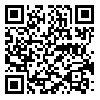Volume 20, Issue 2 (June 2022)
Iranian Rehabilitation Journal 2022, 20(2): 217-224 |
Back to browse issues page
Download citation:
BibTeX | RIS | EndNote | Medlars | ProCite | Reference Manager | RefWorks
Send citation to:



BibTeX | RIS | EndNote | Medlars | ProCite | Reference Manager | RefWorks
Send citation to:
Kenarangi T, Bakhshi E, Inanloo Rahatloo K, Biglarian A. Identifying Gene Signature in RNA Sequencing Multiple Sclerosis Data. Iranian Rehabilitation Journal 2022; 20 (2) :217-224
URL: http://irj.uswr.ac.ir/article-1-1470-en.html
URL: http://irj.uswr.ac.ir/article-1-1470-en.html
1- Department of Biostatistics and Epidemiology, University of Social Welfare and Rehabilitation Sciences, Tehran, Iran.
2- Department of Cell and Molecular Biology, School of Biology, College of Science, University of Tehran, Tehran, Iran.
3- Department of Biostatistics and Epidemiology, Social Determinants of Health Research Center, University of Social Welfare and Rehabilitation Sciences, Tehran, Iran.
2- Department of Cell and Molecular Biology, School of Biology, College of Science, University of Tehran, Tehran, Iran.
3- Department of Biostatistics and Epidemiology, Social Determinants of Health Research Center, University of Social Welfare and Rehabilitation Sciences, Tehran, Iran.
Abstract: (3420 Views)
Objectives: Multiple Sclerosis (MS) is a complex central nervous system disease; it is the result of a combination of genetic predispositions and a nongenetic trigger. This study aims to find the gene signatures using a Pareto optimization algorithm for MS RNA sequencing (RNA-seq) data.
Methods: This case-control study involved 50 samples (25 MS patients and 25 age-matched healthy individuals) and their GSE profiles (GSE123496) were selected from the National Center for Biotechnology Information Gene Expression Omnibus database. We used Pareto-optimal cluster size identification to find the gene signatures in the RNA-seq data. After prefiltering and normalizing the data, we used the Limma package to find the differentially expressed genes (DEGs). The Pareto-optimal cluster size for these DEGs was then determined using the technique, multi-objective optimization for collecting the clusters alternatives. Afterward, the RNA-seq data were clustered via k-means with suitable cluster size. The best cluster, as a signature, was found by calculating the mean of the Spearman correlation coefficients (SCCs) of whole genes in the module in a pairwise manner. All analysis was performed in the R software, 4.1.1 package, under virtual space with 100 GB RAM.
Results: In total, 960 DEGs were identified by the Limma analysis. Among them, 720 were up-regulated genes and 240 were down-regulated genes. Meanwhile, 6 Pareto-optimal clusters were obtained. Two clusters that had the greatest average SCCs score (0.88 and 0.74, respectively) were chosen as the gene signatures.
Discussion: A total of 9 metabolic prognostic genes and 3 biological pathways were identified. These can provide more potent prognostic information for MS patients.
Methods: This case-control study involved 50 samples (25 MS patients and 25 age-matched healthy individuals) and their GSE profiles (GSE123496) were selected from the National Center for Biotechnology Information Gene Expression Omnibus database. We used Pareto-optimal cluster size identification to find the gene signatures in the RNA-seq data. After prefiltering and normalizing the data, we used the Limma package to find the differentially expressed genes (DEGs). The Pareto-optimal cluster size for these DEGs was then determined using the technique, multi-objective optimization for collecting the clusters alternatives. Afterward, the RNA-seq data were clustered via k-means with suitable cluster size. The best cluster, as a signature, was found by calculating the mean of the Spearman correlation coefficients (SCCs) of whole genes in the module in a pairwise manner. All analysis was performed in the R software, 4.1.1 package, under virtual space with 100 GB RAM.
Results: In total, 960 DEGs were identified by the Limma analysis. Among them, 720 were up-regulated genes and 240 were down-regulated genes. Meanwhile, 6 Pareto-optimal clusters were obtained. Two clusters that had the greatest average SCCs score (0.88 and 0.74, respectively) were chosen as the gene signatures.
Discussion: A total of 9 metabolic prognostic genes and 3 biological pathways were identified. These can provide more potent prognostic information for MS patients.
Article type: Original Research Articles |
Subject:
Biostatistics
Received: 2021/09/26 | Accepted: 2022/04/16 | Published: 2022/06/1
Received: 2021/09/26 | Accepted: 2022/04/16 | Published: 2022/06/1
Send email to the article author








